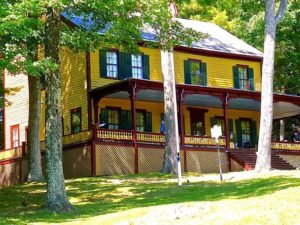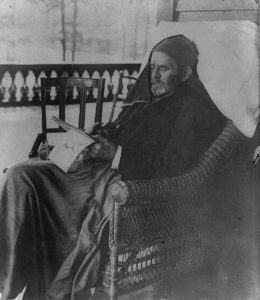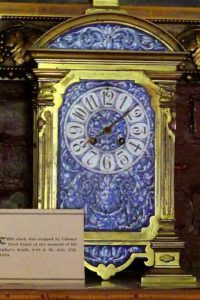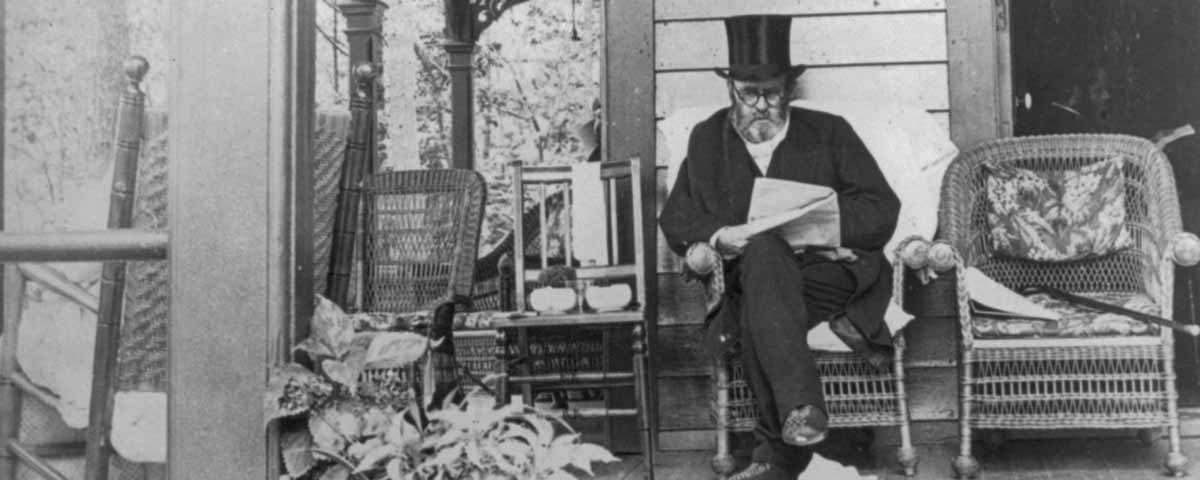
The porcelain clock on the mantle marks the moment time stopped in the cozy vacation cottage high on a hill above the Hudson River Valley. The Adirondack Mountains shimmer on one horizon; the Catskills on the other. Duncan McGregor, for whom the 1,070-foot-high mountain is named, couldn’t have imagined that the site he bought to harvest its trees would later become the last refuge of Ulysses S. Grant, savior of the Union and twice-elected president of the United States, who had retreated there in a race to finish his memoirs before the cancer that plagued him achieved its final victory. When Grant took his last breath at 8:08 a.m. on July 23, 1885, his eldest son, Fred, immediately stopped the hands of the clock on the mantle.
Today the Grant Cottage, a state historic site since 1957 and operated by the Friends of the Ulysses S. Grant Cottage State Historic Site since 1989, remains a pilgrimage point for Civil War enthusiasts and regional vacationers alike. It was added to the National Historic Register in 1971, and was recently designated a Literary Landmark by United for Libraries in partnership with the Empire State Center for the Book. Though Civil War–related sites are not common in upstate New York, visitors are drawn to the area to experience its many points of historical interest, recreational opportunities, fine art and music, and an abundance of dining and lodging experiences.

Grant spent only the last five weeks of his life at Mount McGregor. He arrived in nearby Saratoga Springs on June 16, 1885, via a special train aboard the private rail car of Cornelius Vanderbilt. Only eight months before, Dr. J.D. Douglas of New York diagnosed Grant with terminal throat cancer. A team of doctors believed the region’s clear, cool air might prove soothing to the ailing general and give him the time he needed to finish writing and editing his memoirs. Grant had unwittingly lost his family’s fortune in a fraudulent financial scheme, and his friend, author Mark Twain, believed the general’s reminiscences would provide Julia Grant with the security she would need after her husband died.
Joseph W. Drexel owned the cottage that stood in the shadow of his popular resort Hotel Balmoral. He quickly refurbished it for use by the general and his entourage that included family members, servant, stenographer, and medical staff. Grant arrived at the resort via an 11-mile narrow gauge railroad built by Drexel to ferry guests from Saratoga Springs to the hotel. When Grant tried to walk the final steps to the cottage, he almost collapsed from the effort. A special invalid’s bath chair conveyed him to the porch. There, Grant willed himself to climb the steps to his final residence with only the aid of a cane.

During his good days, Grant usually sat in a wicker chair on the northeast corner of the cottage’s wide veranda, reading galley proofs of what he had written and writing revisions and additions on a tablet resting on a lap board. When not working, he read the newspapers and greeted friends, throngs of well-wishers, and the morbidly curious who steadily streamed up the mountain. When his voice failed, he communicated through “pencil talks,” jotting notes to visitors. Newspaper reporters, staying at the nearby hotel, provided daily, detailed updates on the slightest changes in the general’s condition. Some days, his condition seemed to improve; other days there were setbacks. No one, however, expected a recovery. Indeed, on July 2 Grant wrote to Dr. Douglas, “I would say, therefore, to you and your colleagues to make me as comfortable as you can.…I should prefer going now to enduring my present suffering for a single day without hope of recovery.”
The nights were when Grant suffered most. Unable to sleep in a bed for many months, he slept practically upright between two leather-bound easy chairs in a small rear room. Today, the room holds refurbished replicas of the chairs, his reading lamp and glasses, and samples of the paper and pencils he used to write when he couldn’t sleep. His nightshirt, hair and mustache brush, a blood pressure cuff, and his beaver top hat are on display in a glass-door cabinet. On top of the cabinet, a tall glass apothecary tube still contains the emulsion of cocaine used to dress his painful throat.
Grant rarely ventured beyond the cottage. Any outdoor activity exhausted his wasted body. Throughout his stay at Mount McGregor, he always ate alone and took only small amounts of specially prepared liquid food. When he died, Grant weighed barely 80 pounds. Nevertheless, on July 20 he expressed a wish to be taken to the Eastern Overlook, a beautiful vantage point with panoramic views of the valley and the mountains in the distance. Visitors can walk there today and see essentially what Grant did during the last 20 minutes he ever spent in the open air.

His health declined rapidly from there. At 1 a.m. on July 22, Dr. Douglas summoned all family members and medical staff to the cottage. During his last day, Grant drifted in and out of consciousness. He consented to be moved to the front room and placed in the bed there. Julia Grant held his hand; Fred stroked his brow. Perhaps the last words he hoarsely whispered were, “I hope no one will be distressed by my condition.” The room where he died is known today simply as “The Death Room.”
Grant, the unassuming man who vowed “to fight it out on this line if it takes all summer,” had held the line long enough to finish his memoirs just four days before he died. First published in December 1885, the two-volume set earned $450,000 in royalties for the Grant family in the first two years (equivalent to $11 million today). The books have never been out of print.
The dining room table served as Grant’s first bier. The body was embalmed and he lay in state until August 4. Several original floral arrangements were preserved in wax and still stand their ghostly post in the dining room. The final burial services were held in Riverside Park in New York City on August 8. A million people lined the funeral route, and 60,000 participated in the parade. Mrs. Grant did not attend. She stayed at Mount McGregor for another month. Joseph Drexel never occupied his cottage again. He turned it over to the Grand Army of the Republic to keep the cottage open to the public as a memorial. The State of New York actually considered tearing it down before The Friends of the Cottage mounted a campaign to keep it open.

The cottage has remained essentially unchanged since Grant occupied it. But there have been many changes around it. The Hotel Balmoral burned to the ground in 1897. A 30-building tuberculous sanatorium was built on its ashes. The sanatorium later became a rest home for veterans, a facility for the developmentally disabled, and then a medium security prison. When the prison closed in 2014, the complex was offered to private developers, but it remains unsold. The Grant Cottage remains the sole the master of Mount McGregor.
Easy access to nearby historic Saratoga Springs offers everything a history-loving vacationer could ask for. In August, there’s thoroughbred racing at bucolic Saratoga Springs Race Track. Augment or lose your winnings at two 24-hour casinos. On the grounds of Saratoga Spa State Park, enjoy invigorating mineral baths before going to the Saratoga Performing Arts Center for outdoor concert, dance, and theater presentations. Nearby, in the Town of Stillwater, lies the Saratoga Battlefield National Historical Park, site of a pivotal Revolutionary War engagement. The Gerald B.H. Solomon Saratoga National Cemetery is in Schuylerville, N.Y.
Most motel chains have Saratoga Springs locations or you can splurge at The Inn at Saratoga or Batcheller Mansion Inn. Camping enthusiasts can enjoy a variety of activities at nearby Moreau Lake State Park. Eating can be a gastronome’s delight. Eat inexpensively downtown on Broadway at Comptons Restaurant or Uncommon Grounds. Top shelf dining abounds including Lake Ridge, The Wishing Well, and Longfellow’s restaurants.





